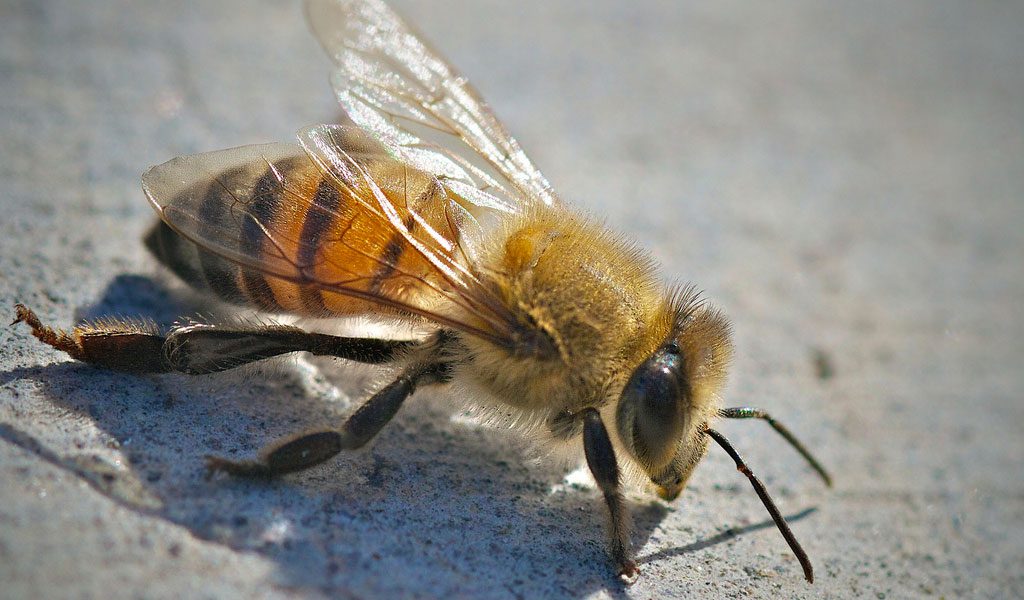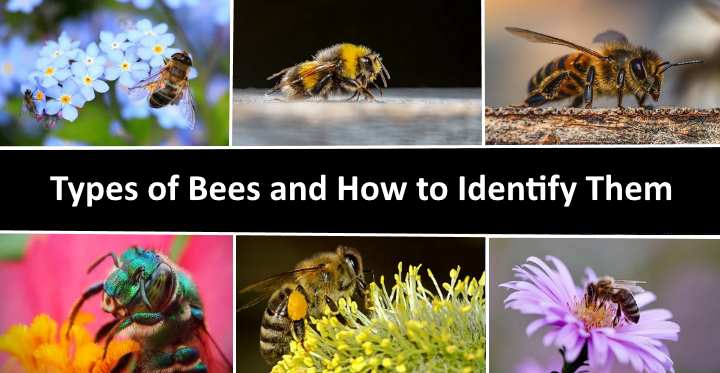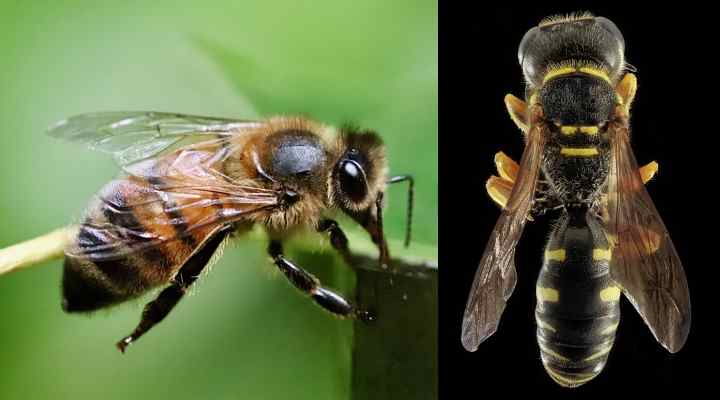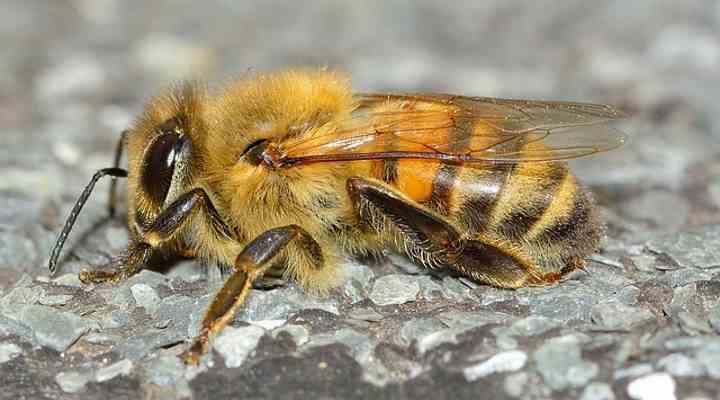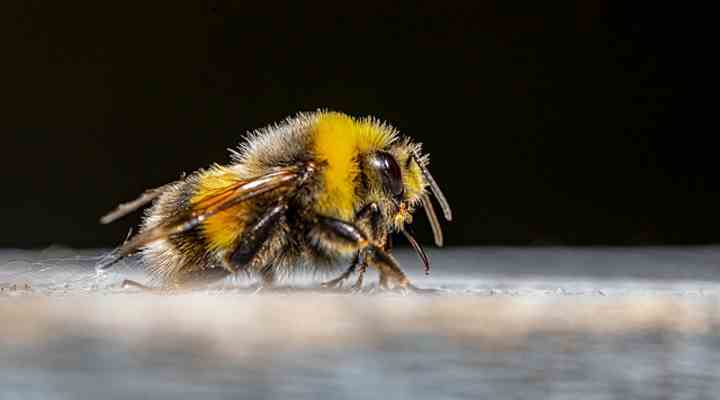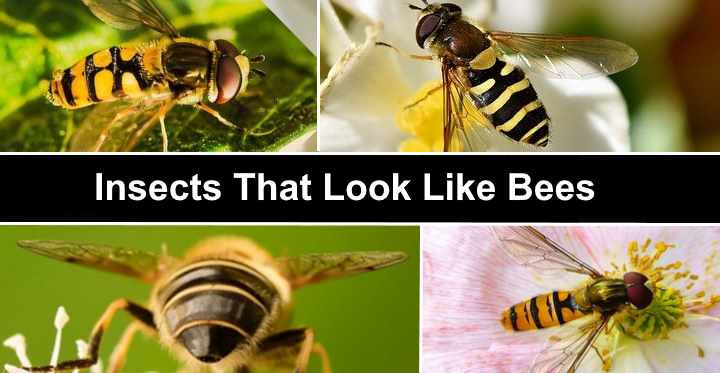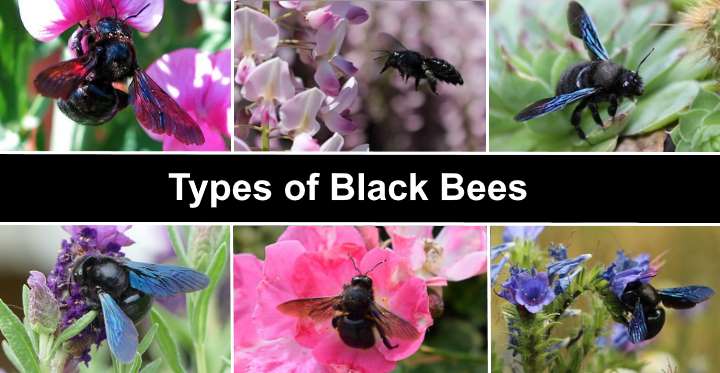Types of Bees and How to Identify Them (Pictures, Names, Identification)
Animals
Email
PinterestFacebookTwitterLinkedin
Bees are small flying insects, common in summer gardens flying from flower to flower. Most bee species are recognizable by their striped fuzzy bodies—often with black and yellow or orange markings. There are 20,000 species of bees, and the most common – the Western honey bee (
Apis mellifera) – is famous for producing honey.
This article is a guide to the most popular species of bees you will find in your garden. Along with pictures of common bees, descriptions of these flying
types of insects will help identify various bee species.
How to Identify Bees
The best way to identify species of bees is by observing their shape, size, color, and habitats. However, bee identification can be tricky, and many species have similar characteristics. It may be easy to tell a bumble bee and honey bee apart, but identifying other bee species is challenging.
For example, bumble bees have fuzzy bodies with black and yellow stripes and are larger than honey bees. Most carpenter bees are similar to bumblebees but are mostly black, and they have shorter hairs.
The colors of bees vary from species to species. Many types of honey bees are brown or tan colors. However, larger carpenter bees are mostly black. Some bumble bee species can also be black, or some have black, white, and yellow markings. There are also fascinating bee species that have shiny green metallic colors.
Bees vs. Wasps – How to Tell the Difference
Close up pictures of a honey bee (left) and a wasp (right)
Bees and
wasps are closely related, and both belong to the insect order
Hymenoptera. One way to tell bees and wasps apart is by the smoothness of their body. Wasps tend to have slender, smooth bodies, whereas bees have a furry appearance and are plumper. Also, bees can only sting once before dying, but wasps can sting multiple times.
Facts About Bees
Bees, especially honey bees, are generally social creatures that live in large colonies. A single hive can contain between 20,000 and 80,000 worker bees. A bee colony is also highly organized, with a queen, drones, and workers caring for the beehive.
Even though many species of bees swarm in large groups, other species are solitary creatures.
Bees play a vital role in most ecosystems. Bees are crucial for pollinating flowers so that we have crops of fruit and vegetables every year. Also, bees produce honey, a delicious sweet food enjoyed by humans, animals, and birds.
Although many bees are species of stinging insects, they are generally not aggressive. Bees are usually docile creatures and don’t attack humans. However, Africanized bees are aggressive and territorial insects. The problem is that Africanized honey bees look like regular honey bees—
Apis mellifera—and can attack without being provoked.
Bees feed on pollen and nectar from flowering plants. As bumblebees, carpenter bees, and honey bees move from plant to plant, they pollinate the flowers. Honey bees then take the nectar and pollen back to the colony where they produce honey—a food source for bees that never leaves the hive.
Types of Bees with Names and Pictures (Including Bee Identification Guide)
Here is a list of different types of bees you might find buzzing around your garden (including bee identification guide with images).
Western Honey Bee (Apis mellifera)
The Western honey bee has black and orange-yellow bands on the abdomen and hair on the thorax
Western honey bees have black and tan-yellow stripes on their slender bodies. Western honey bees are easy to identify as they have a honey-colored look and a relatively smooth abdomen. Honey bees have three pairs of fuzzy black legs, a pair of antennae, and two pairs of wings.
As with all bees, honey bees have a body in three segments—a head, thorax, and abdomen. The females’ hind legs have pollen pouches that they use to transport pollen back to the hive.
Western honey bees are also called European honey bees – these
winged insects are the primary bee species used for honey production. Western honey bees are popular with beekeepers because they are not aggressive and produce plenty of honey.
Although there are over 20,000 bee species in the world, there are only eight honey bee species. These honey-producing insects in the genus
Apis include the eastern honey bee (
Apis cerana), the giant honey bee (
Apis dorsata), and Koschevnikov’s honey bee (
Apis koschevnikovi).
Western honey bee identification
Western honey bees have a hairy brown-colored thorax and black and dark orange bands on their relatively smooth abdomen. Look for pollen baskets (corbicula) on their black hind legs. Honey bees can grow up to 1/2” (1.2 cm) long.
Bumble Bee (Bombus)
Bumble bees can be identified by their fuzzy appearance and large black and yellow body with a white tail
Bumble bees are easy to spot with their round fuzzy bodies with black and yellow stripes and white tails. Depending on the bumble bee species, they may have red or yellow tails. There are 250 individual species of bumble bees, most of which have similar identifying features.
The name bumble bee literally means to buzz, hum, or move clumsily. This descriptive name accurately depicts their bumble behavior as they feed on flower pollen and nectar.
Unlike honey bees, bumble bees live in nests and smaller colonies. They only store small amounts of food in the nest. Also, bumble bees have a wider body and fuzzier appearance compared to honey bees. Similar to honey bees, bumble bees have pollen sacs on their hind legs.
Bumble bee identification
Bumble bees are large bees with hairy bodies and legs. Look for distinctive yellow and black bands and tails that are generally white, but could also be yellow or red. Bumble bees grow up to 0.6” (1.7 cm).
.....
@ 35 others in this link, with good color ID photos.
...
Many Types of Bees and How to Identify Them (Pictures, Names, Identification Chart)
leafyplace.com
